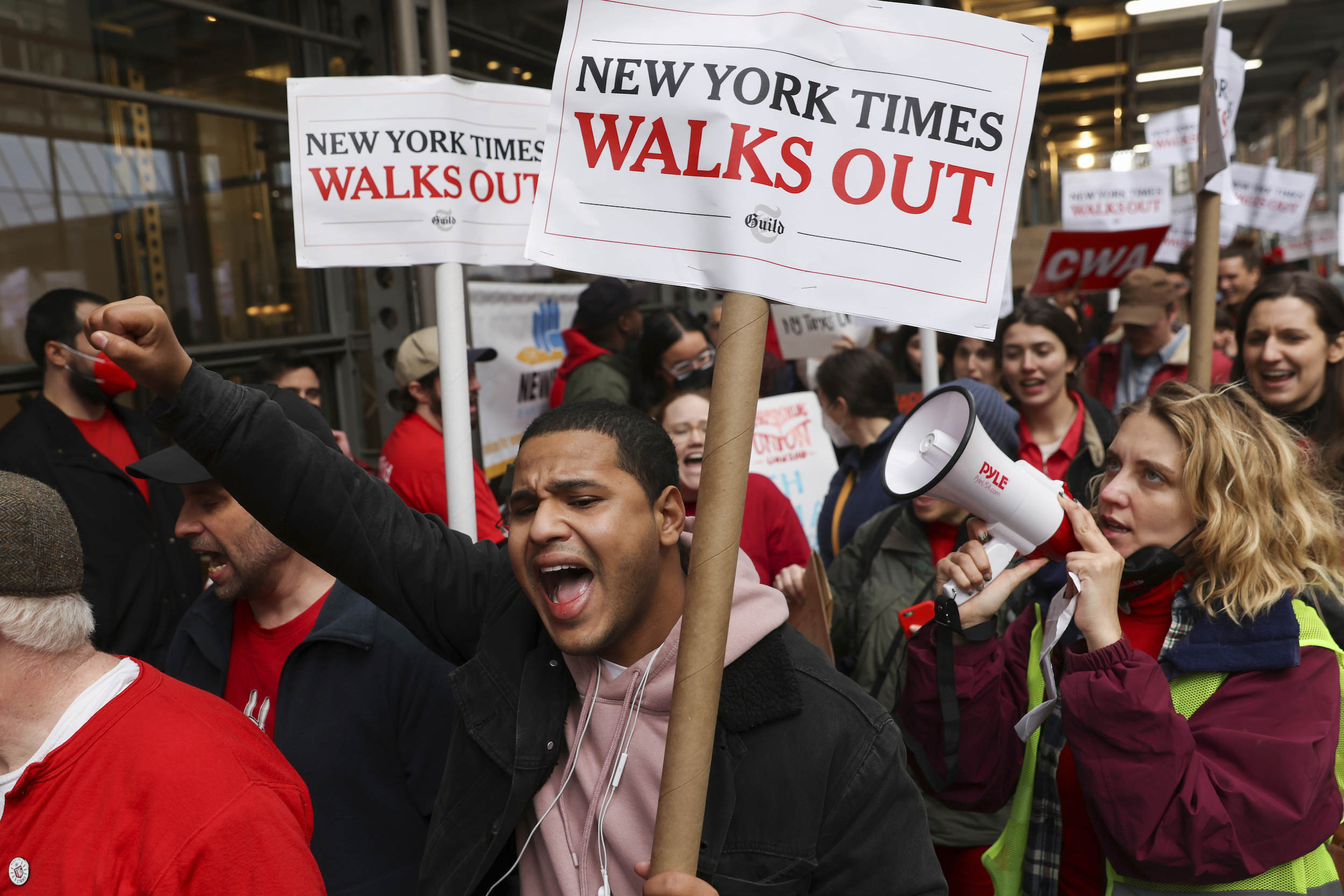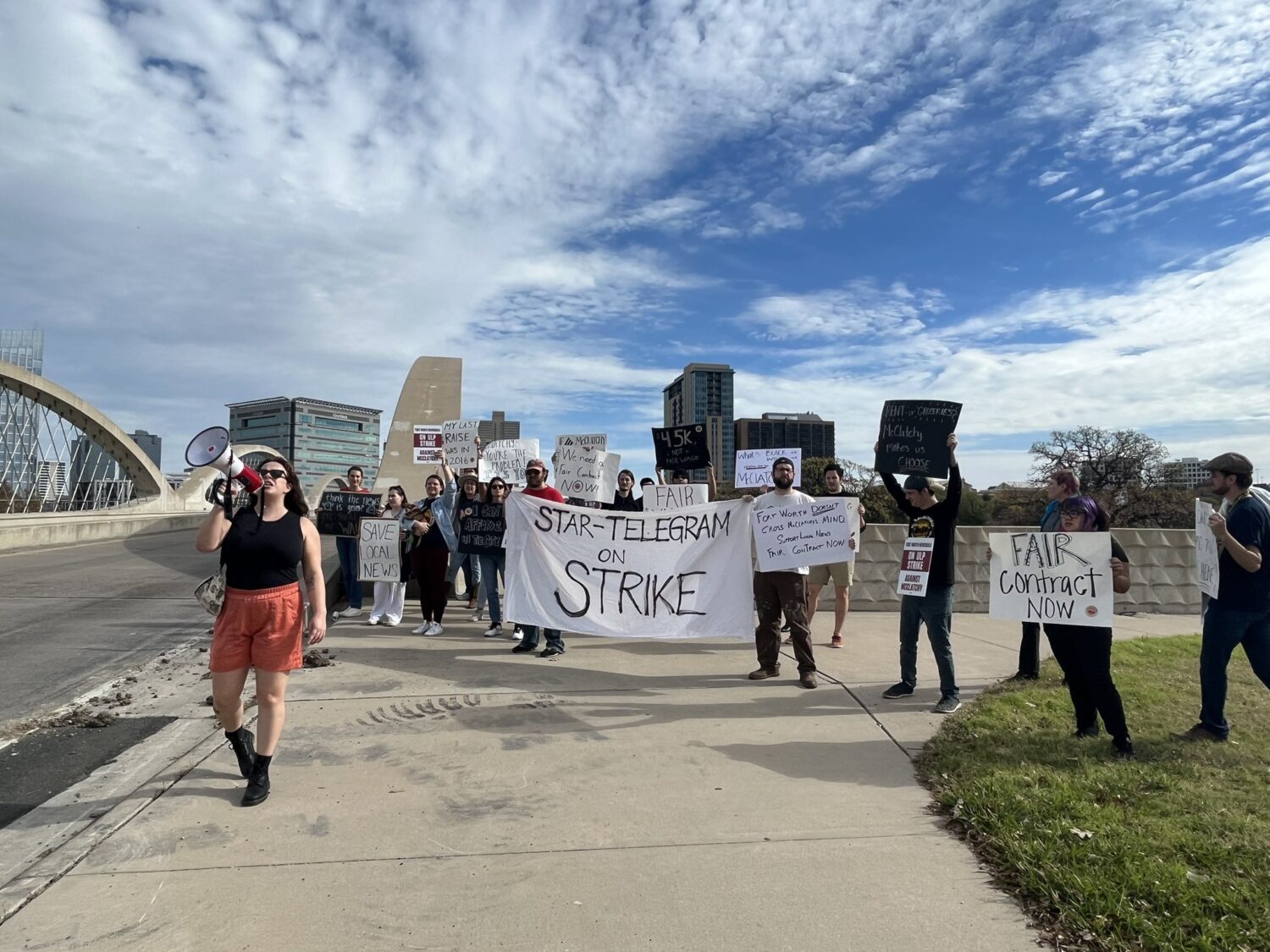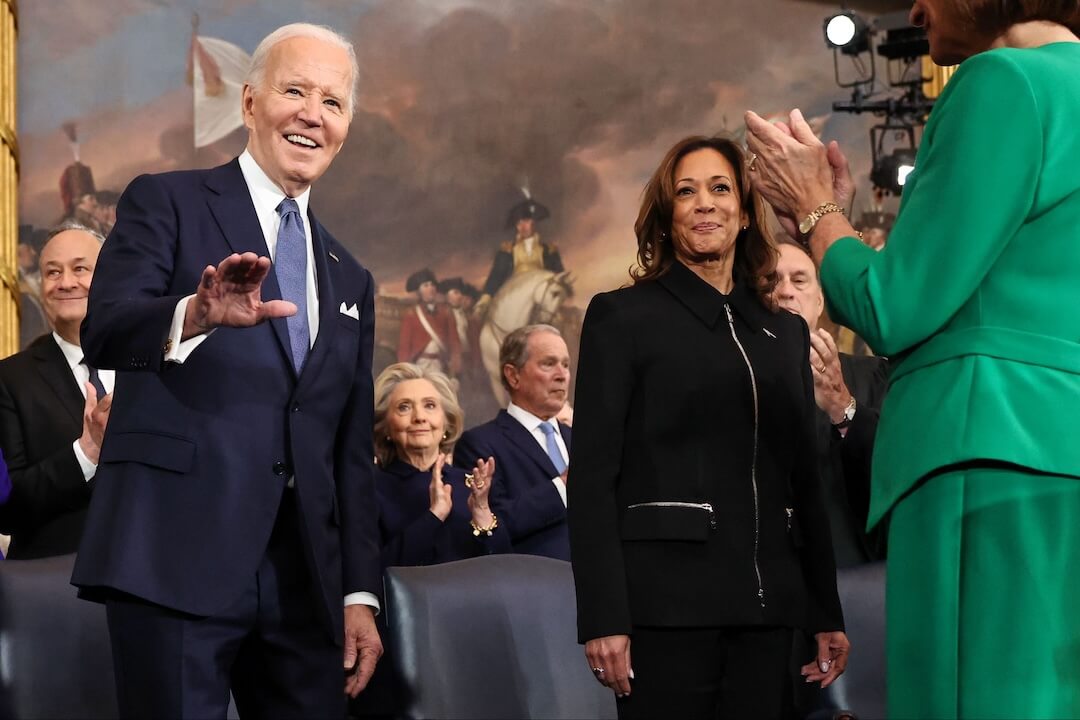Readers checking the Pittsburgh Post-Gazette and Fort Worth Star-Telegram websites in recent weeks may have noticed some subtle differences: an influx of wire stories, unfamiliar names, missing bylines.
Workers at both papers are on open-ended strikes. The Pittsburgh journalists started theirs on Oct. 18, while the Fort Worth editorial staff walked off the job Nov. 28. During that time, employees at the New York Times and more than a dozen Gannett newsrooms have also held one-day walkouts. It’s the most labor unrest the American journalism industry has experienced in decades.
The past two years have seen more than 20 strikes and strike threats by media unions, according to a Poynter analysis. Prior to 2021, such work stoppages were rare. The last time journalists held an open-ended strike was in 2000 when staff at The Seattle Times and Seattle Post-Intelligencer stopped working for more than a month.
The rise in strikes and strike threats marks a turning point in NewsGuild strategy, said president Jon Schleuss. For nearly 20 years, the NewsGuild — the largest union for journalists — took a break from strikes. Now, workers are finding it increasingly difficult to secure contracts that would address the working conditions that forced them to unionize in the first place.
“These media companies have been refusing to bargain in good faith, and so they drag out the process as much as possible,” Schleuss said. “All these journalists and other media workers are extremely frustrated by the time it takes to get a contract.”
The NewsGuild has already held several trainings this fall to ready its members for strikes. Most notably, more than 100 members attended a “Strike School” held by the New York local in September to learn how to plan their own strikes.
In some ways, the increase in strike activity is a natural consequence of a unionization movement that has hit the journalism industry, said University of Toronto associate professor Nicole Cohen. Driven by rising costs of living and deteriorating work conditions, dozens of newsrooms have unionized since the start of the pandemic. Now they are fighting for first contracts.
But it’s not just new unions that are issuing strike threats. Both the Times and the Post-Gazette have been unionized for decades. Other outlets with longstanding unions like Reuters and the Rochester Democrat and Chronicle have staged 24-hour strikes this year.
“Strikes right now are a sign of worker solidarity and power,” Cohen said. “You need a lot of unity and support in a bargaining unit to carry out a strike. That’s very difficult to do. So I think it (the increase in strikes) also speaks to the current strength of organizing and mobilizing in the media sector.”
The ‘escalation mountain’
When the NewsGuild first starts organizing a newsroom, they introduce workers to the concept of an “escalation mountain.” Every action they take to get fair working conditions is an escalation, and at the top of the mountain is a strike.
On the way to the summit, unions may take interim measures like changing Slack avatars, initiating email campaigns or holding lunchtime walkouts to show support for their cause. The goal is to pressure the company at the bargaining table.
“When you’re sitting down with the company, regardless of the company, it’s mostly theater. It’s a question of who feels that pressure,” Schleuss said. “What level of pressure are you building to show that you mean serious business?”
Companies have a financial incentive to push for weaker contracts. Each contract sets a baseline for the next round of negotiations, during which workers will demand more protections.
Strikes are a last resort. Not only do they result in lost wages, but they are also demoralizing. Workers risk losing their benefits. Journalists participating in the Post-Gazette and Star-Telegram strikes have lost their health insurance.
Eventually, however, unions may decide to take that last step. In recent years, strikes and strike threats have generally taken place around the two-year mark of contract negotiations, though that varies by union. Schleuss said the main factor in deciding to strike is whether the company has been bargaining in good faith.
Sara David — a vice president of the Writers Guild of America, East, which represents many digital outlets — said she has noticed that the timeframe between the start of contract negotiations and a strike threat has compressed thanks to the rise of private equity. Workers feel pressure to lock in a contract before their company gets acquired.
“Maybe within one year, there’s a Hollywood Reporter or Variety article about how your company is possibly going to be bought,” David said. “It’s really put us in an urgent kind of ‘now or never’ moment.”
The Vox Union, which is part of the Writers Guild, chose to hold a strike authorization vote in June after six months of bargaining. Their contract was on the verge of expiring, and management had offered to extend it for another three months so that they could continue bargaining. The union rejected the offer and reached a deal within two weeks of their strike threat.
“Bargaining is a huge time commitment. It’s a huge effort. Everyone on the bargaining committee already had their other jobs to do.” said Jaya Saxena, who was on the Vox Union’s bargaining committee. “It takes over your entire life while you’re doing it.”
While preparing for a possible strike, union leaders ask questions like, can members survive off the strike fund? Will the losses caused by a strike be offset by gains from a new contract? How much public support do we have?
Several unions have opted to hold short-term strikes — usually lasting 24 hours — before threatening an open-ended one. These shorter work stoppages are a chance for union members to prove themselves to the company.
“With a one-day walkout, we felt that we could communicate our strength and frustrations to management,” said Max Eddy, a member of the Ziff Davis Creators Guild unit council. The union, which represents workers at Mashable, PCMag and AskMen.com, held a 24-hour strike in April 2021 before threatening an open-ended one in May. “I think it was a really important wake-up call.”

Hundreds of New York Times journalists and other staff picket outside the Times’ office in Manhattan Dec. 8 after walking off the job for 24 hours, frustrated by contract negotiations that have dragged on for months in the newspaper’s biggest labor dispute in more than 40 years. (AP Photo/Julia Nikhinson)
How effective are strikes?
Union leaders who have organized strikes and strike threats say those actions helped accelerate contract negotiations.
In March, the GMG Union — which represents journalists at Gizmodo, Jezebel, The Root and other publications — launched the first open-ended digital media strike in the U.S. Workers were prepared to strike for at least two weeks when the company agreed to a contract proposal just five days in, said Susan Rinkunas, who served on the bargaining committee and is now on the Writers Guild council.
Saxena said the GMG Union’s success was likely one of the reasons why the Vox Union never had to make good on its strike threat. Both shops share the Writers Guild as a parent union.
“I do think that seeing GMG call management’s bluff on that and actually go on strike worked in our favor because then we could tell management when we’re threatening a strike, we’re not joking,” Saxena said. “I think seeing that it could be done made everyone realize, ‘OK, this is possible.’”
A few months after the Vox Union’s strike threat, the union at The Dodo — which is also owned by Vox — followed suit. They ratified a contract just three weeks after threatening to strike.
All eyes are now on the Post-Gazette and the Star-Telegram. The journalism unions there have been striking for 59 days and 17 days, respectively. Both unions have sat through at least two bargaining sessions with little to show for it. Some members have left and found jobs elsewhere.
Some media watchers argue that newspaper strikes are less effective in the internet age since information is much more accessible. In an op-ed, Politico senior media writer Jack Shafer pointed out that in the event of a strike at the New York Times, readers could still get their news from other sources, like the Wall Street Journal and the Washington Post. Businesses could easily find other venues for their advertisements. Newspapers no longer have “the economic and cultural centrality they held 60 years ago,” Shafer wrote.
Two years ago, Andrew Conte, director of Point Park University’s Center for Media Innovation, examined the 1992 Pittsburgh newspaper strikes for his media column in local news outlet NEXTpittsburgh and came to a similar conclusion. The strikes had a major impact 30 years ago. TV stations had to broadcast obituaries, and the Pittsburgh Pirates sold fewer tickets. But newspaper readership and revenue have fallen dramatically since then, making the situation now “much more fragile,” Conte wrote.
The Post-Gazette and Star-Telegram have continued to put out papers during the strikes. At the Post-Gazette, nearly half the union has returned to work. Though the Fort Worth strike has a higher percentage of union members participating, a few workers have crossed the picket line. Still, striking workers at both papers say their work stoppage has led to gaps in coverage. Managers might be able to run wire stories and cover major events, but in-depth local reporting becomes difficult when beat reporters are on strike. The two papers have already tried to hire replacement workers.
In Pittsburgh, dozens of local political leaders and community groups have signed a pledge not to speak with the Post-Gazette for the duration of the strike. Meanwhile, striking journalists started their own news outlet, the Pittsburgh Union Progress, to cover local news. Strike papers like the PUP are a demonstration of who actually does the work at a newspaper, Cohen said.
“What is it that people want from a newspaper? They want local news. That’s why they chose the newspaper,” Cohen said. “So then (strike papers are) a way to connect with readers and build public support for the campaign.”
Public pressure might be one of the more consequential effects of a strike during the digital age. The New York Times walkout was covered by news outlets across the country, and one employee told Vanity Fair in the days preceding the strike that the union was testing publisher A.G. Sulzberger’s “ego, not his wallet.” Rinkunas and Saxena both said they believed public sympathy for their unions’ causes helped expedite contract negotiations.
It is difficult to predict how the strikes at the Post-Gazette and Star-Telegram will end. Jeanna Sybert, a Ph.D. candidate at the University of Pennsylvania’s Annenberg School for Communication studying the challenges journalists face, noted that major newspaper strikes in the past have had devastating effects on their communities. The 1960 New York City newspaper strikes caused four papers to permanently shutter, and the 1995 Detroit newspaper strikes had long-lasting impacts on circulation while providing union members limited benefits.
Regardless of how they end, the recent media strikes could help propel an ongoing labor movement that extends beyond the journalism industry, Sybert said. Though union membership has been declining for decades, the pandemic has seen a flurry of strike activity. Last year’s “Striketober” marked one strike wave, and thousands of graduate students and Starbucks workers have staged walkouts in the last month alone.
“Even if they (striking journalists) don’t have the material impact that they want, I think you can’t discount the importance of this sort of growing class consciousness and journalists’ growing identification with this worker struggle, worker identity,” Sybert said. “I think that’s really, really important in thinking about the broader labor movement in this country to have better rights and benefits for workers.”







